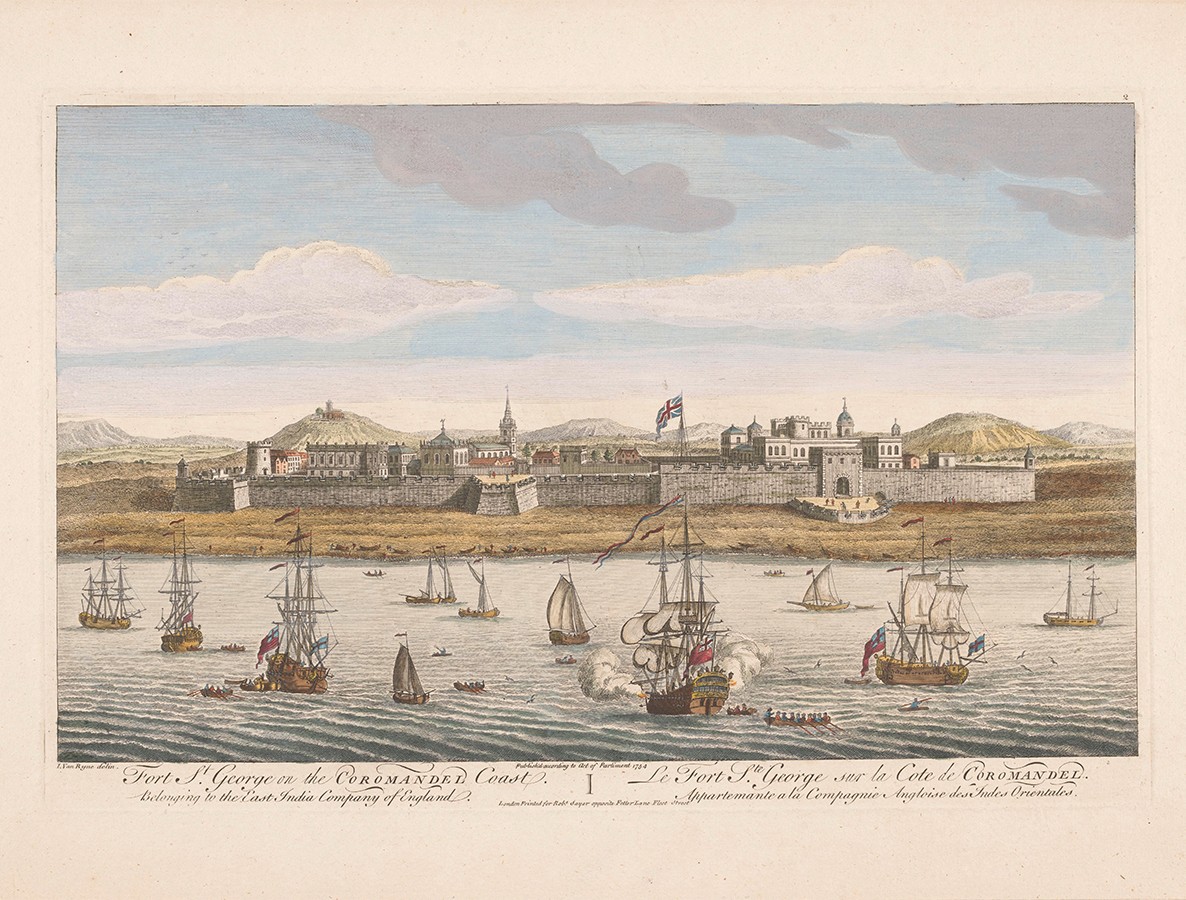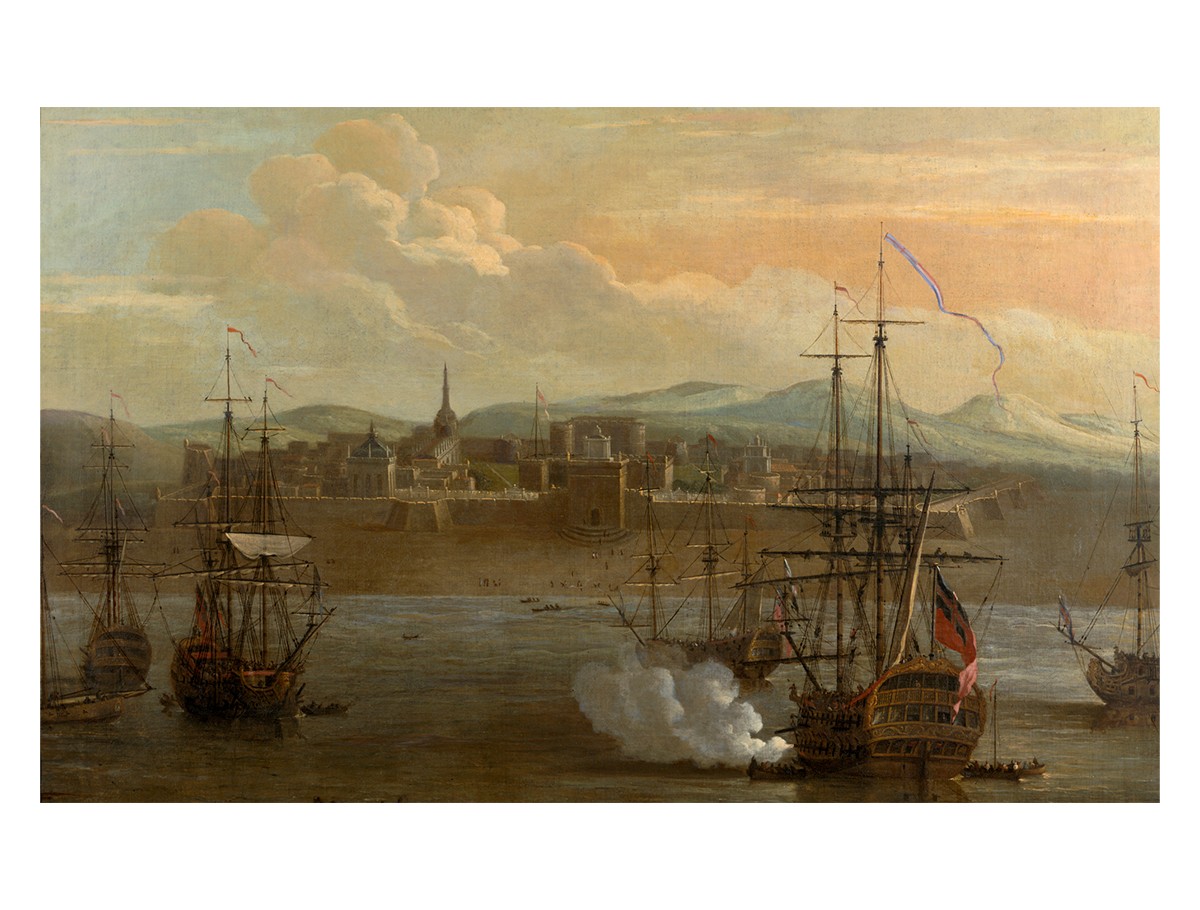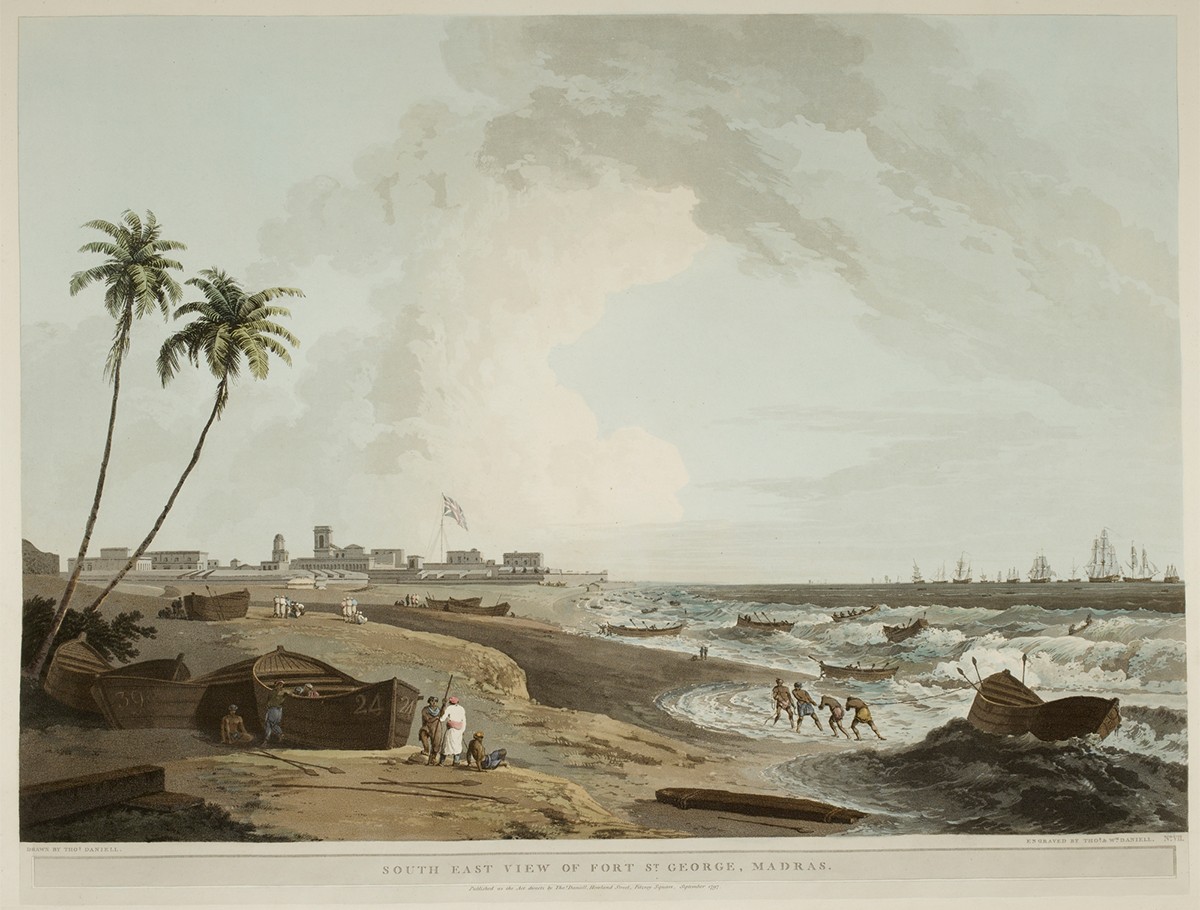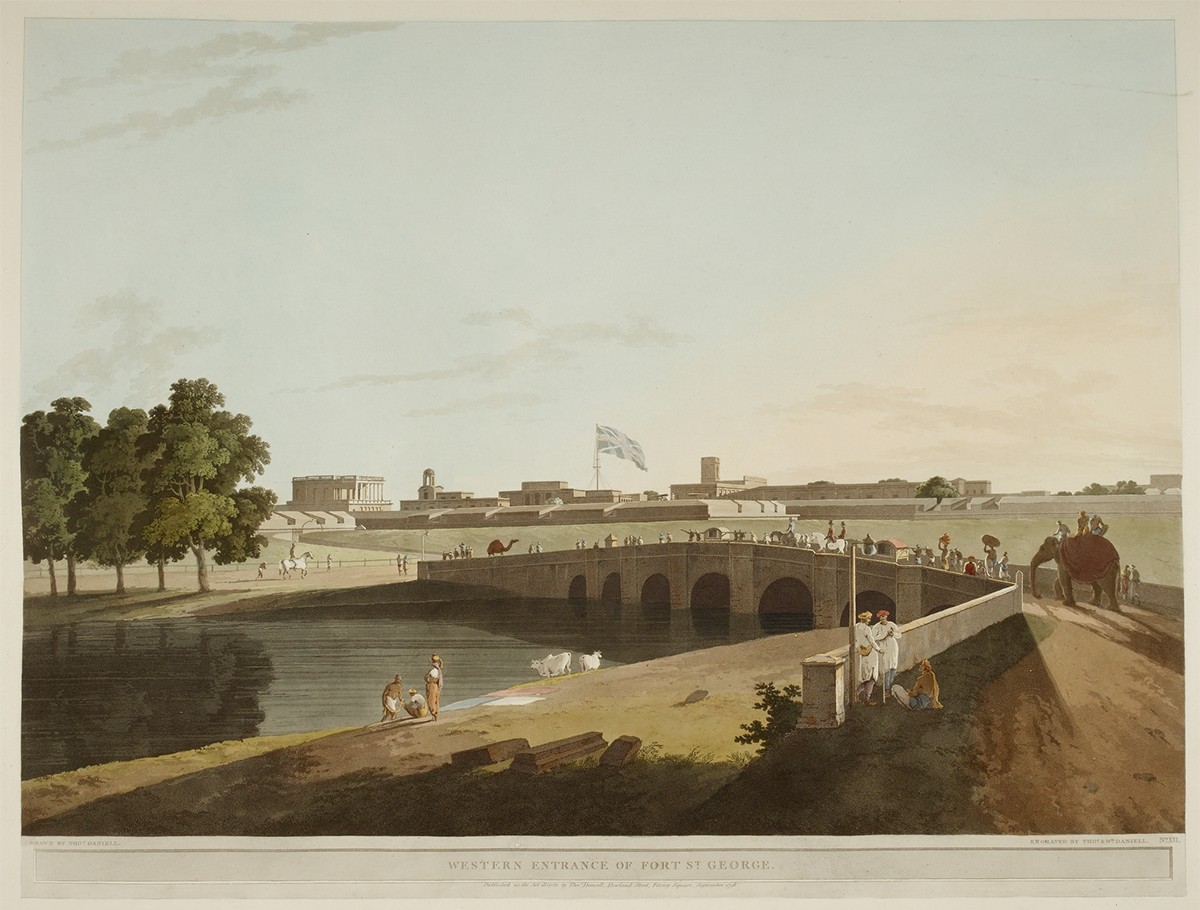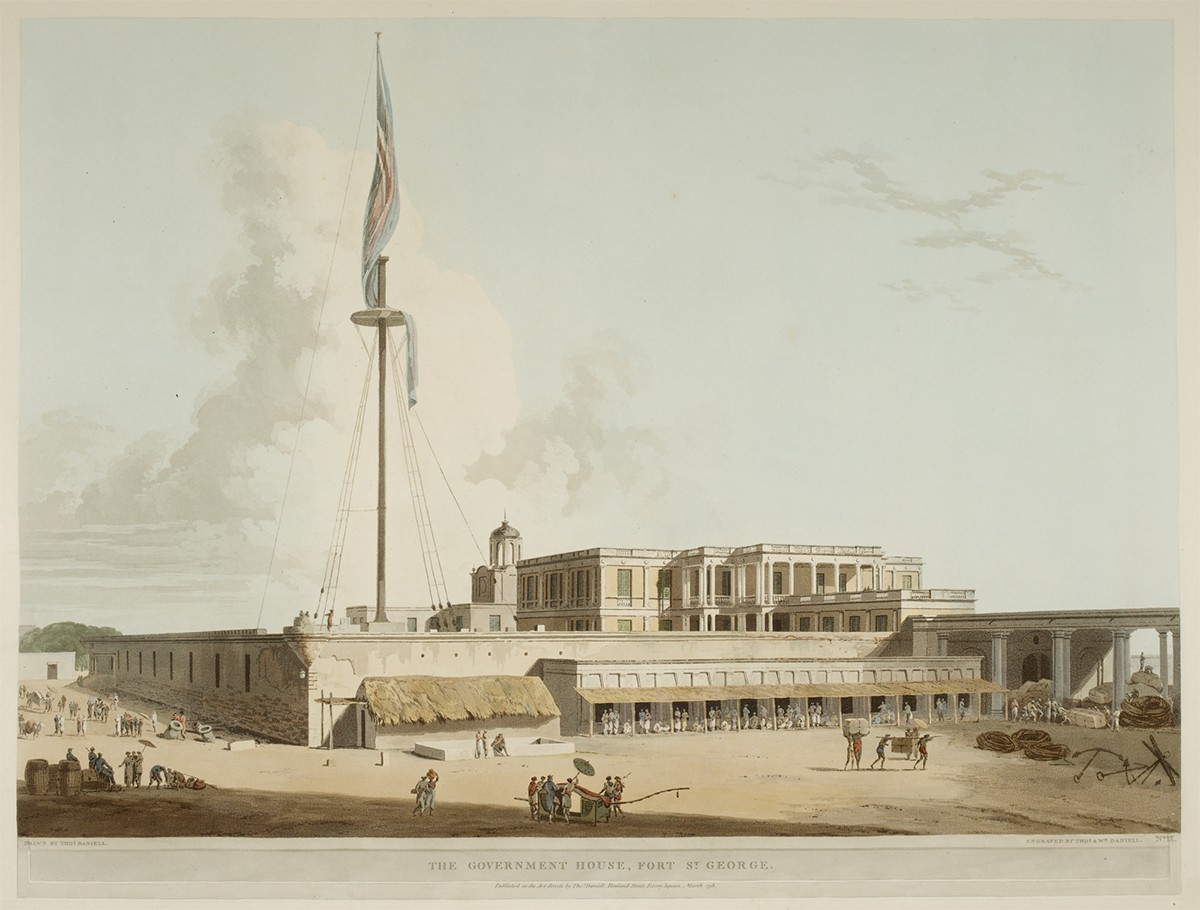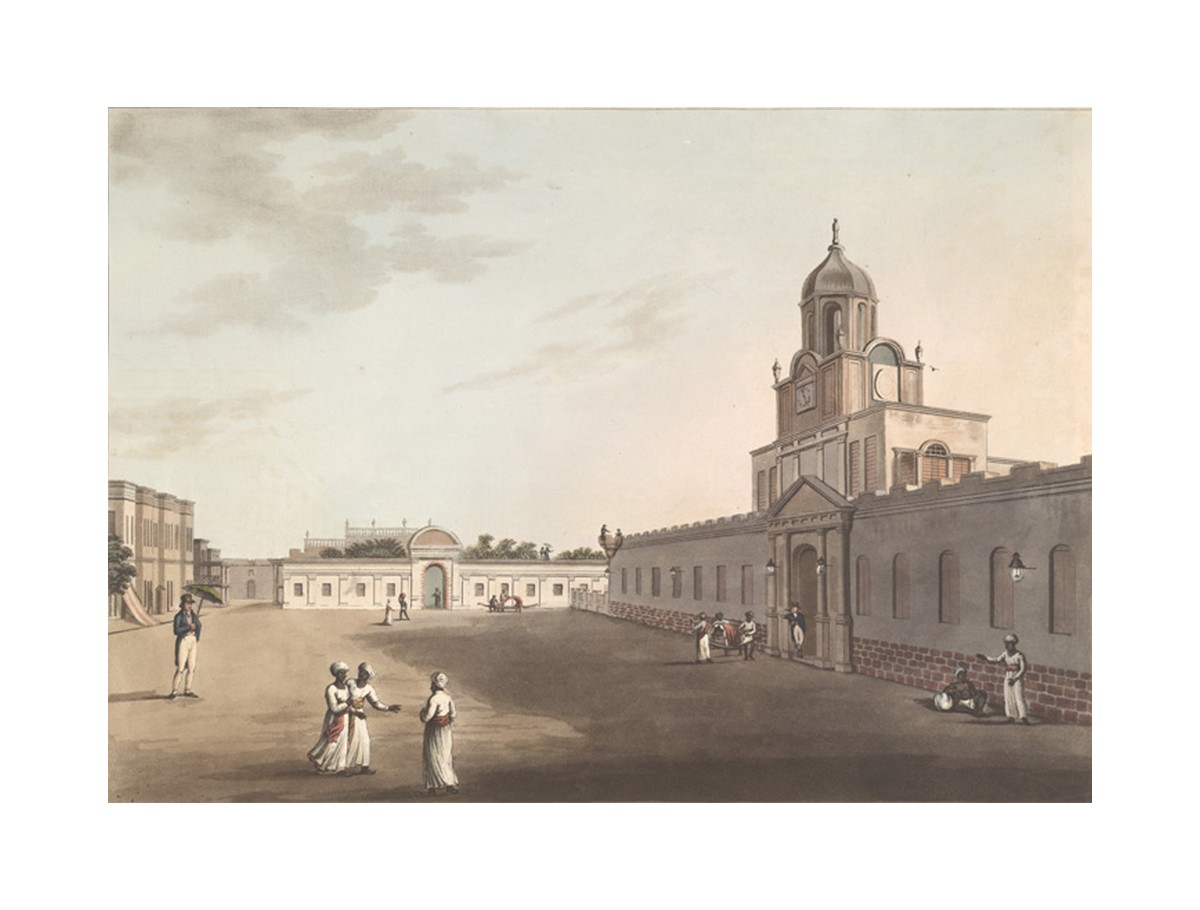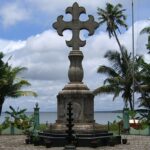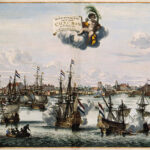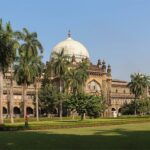Fort St. George Is Built
1639–1644
Francis Day, an entrepreneur and administrator of the British East India Company (EIC) receives a firman — official permission — to build a fort as a seat of trade on a small strip of coastal Tamil Nadu, from the local chieftain Venkatadri Nayak. Named Fort St. George and completed in 1644, this is the first British fort in India, and will lead to the settlement of Madras, India’s first colonial city and site of multiple experiments in colonial state-building. The fort’s position on India’s southeastern coast allows for a profitable trade in kalamkari cloth with South and Southeast Asian ports. For the EIC, this offsets a major fault of the location, which is the turbulent surf on the approach to the shore, making the site a poor harbour. By this time, rival imperial powers have already settled or rented more suitable locations along the coast, such as Tranquebar, Sadras and Pulicat, settled by the Dutch, and San Thome, settled by the Portuguese (but which will later be absorbed into Madras). Moreover, with the Golconda Sultanate’s disruptions to the existing EIC factory’s work, at Masulipatnam, the better fortifications at Fort St. George make it preferable for sustained commercial activity. However, the fort will not be entirely immune to risk, as it is sieged multiple times by French and Dutch troops and their allies over the seventeenth and eighteenth centuries, sometimes as an extension of conflicts between colonial powers back in Europe.
An entrepôt for the textile trade, the fort will host a small community of local weavers and dyers. The dynamics of this early interaction between the colonial state and its subjects is apparent in the way the city is segregated and financed. The bulk of the workers lived in what is called the Black or Gentu Town, in reference to the majority Telugu weavers. Later in the seventeenth century, rich Indian merchants would take up residence there as well.
While evidence today suggests that there may have been some ancient settlements in the area, Madras is generally accepted to be a British-built town. While other cities would go on to become more valuable to the British empire and independent India, Madras’s position as the first colonial city (and not just an entrepot or trading site), the provincial capital of the Madras Presidency, its various Indo-Saracenic structures and its role in fostering multiple art movements in the latter half of the twentieth century make it a unique case study of empire- and nation-building in India.
Bibliography
Gupta, Narayani. “Urbanism in South India: Eighteenth and Nineteenth Centuries.” In The City in Indian History, edited by Indu Banga. New Delhi: Manohar, 1991.
Hancock, Mary. The Politics of Heritage from Madras to Chennai. Bloomington: Indiana University Press, 2008.
Mukund, Kanakalatha. The View From Below. New Delhi: Orient Longman Pvt. Ltd., 2005.
Pearson, Michael. The Indian Ocean. London: Routlidge, 2003.
Subramanian, T. S. “March of Madras.” Frontline, August 20, 2014. Accessed January 3, 2024. https://frontline.thehindu.com/cover-story/march-of-madras/article6328236.ece.
Feedback 
This entry appears in
Art in South Asia
Visit Timeline
Associated Timeline Events
First Published: March 11, 2024
Last Updated: July 2, 2024



